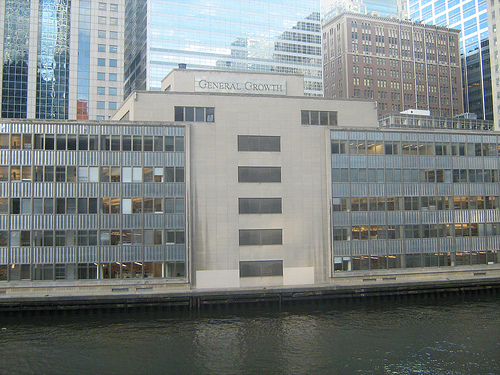Approval of Master Plan Paves Way for Beleaguered GGP’s Massive Mixed-Use Project in Suburban Maryland
Debt-laden General Growth Properties is in the midst of restructuring after having filed for Chapter 11 bankruptcy projection in April 2009, but the Chicago-based REIT is not allowing its current financial woes to sideline development plans.
February 8, 2010
By Barbra Murray, Contributing Editor
Debt-laden General Growth Properties is in the midst of restructuring after having filed for Chapter 11 bankruptcy projection in April 2009, but the Chicago-based REIT is not allowing its current financial woes to sideline development plans. GGP has just moved one big step closer to kicking off a massive mixed-use project on land it owns in Columbia, Md. now that the Howard County Council has signed off on the firm’s 30-year master plan for the 390-acre downtown area.
GGP owns about 330 acres of the parcels involved in the master plan, including land occupied by its 1.4 million-square-foot The Mall in Columbia. The master plan, which centers on sustainability and smart-growth principles, will ultimately yield up to 13 million square feet to be constructed in three phases. As many as 4.3 million square feet of office space, nearly 1.3 million square feet of retail space, 5,500 residential units and 640 hotel rooms will have been constructed at full buildout. The creation of a multi-modal transportation system and the renovation of certain existing properties are also part of the plan.
GGP believes the timing for pursuing the Columbia project is right. “GGP wants to be in a position to develop, very selectively, when market conditions allow it, particularly in areas where there are very high barriers to entry and strong growth drivers like in Columbia,” Greg Hamm, GGP vice president for master planned communities, told CPE. Those strong growth drivers include the U.S. Department of Defense’s Base Realignment and Closure program, which will bring 22,000 new jobs to nearby Fort Meade over the next several years.
Shunned by the lending community due to the credit crunch, GGP was unable to refinance maturing mortgage loans. Now the REIT is in reorganization mode and plans to restructure secured mortgage loans totaling $11.6 billion on 112 of its properties.
Having unanimously voted to green light GGP’s master plan for downtown Columbia, the County Council apparently did not see GGP’s bankruptcy as an insurmountable issue either. “It didn’t hinder the process, as most of the assets in Columbia didn’t file, so it made it a lot easier,” Hamm noted. “But the horrible market on top of the bankruptcy did make it more challenging.”
Securing authorization for development is hardly a simple task, bankruptcy or no. “The process of getting land use approval, especially in Columbia, is arduous and we’re very pleased that, in spite of the challenges we’ve had in the last year, the county stuck with us to come up with this community vision for downtown,” Hamm said.
GGP has various plans for financing the project, including establishing partnerships with developers constructing other product types–GGP focuses predominantly on shopping centers and has a portfolio of over 200 million square feet of retail space. “The idea would be that we would manage and control the horizontal development and the retail,” Hamm said. He added that options include public/private partnerships, and GGP will also consider developing on its own at some point.
Still, moving ahead with plans for such a gargantuan development is unusual these days, even among the companies that have not suffered a big blow due to the credit market deep freeze. “Not many people are investing in a lot of large master plan projects, but it made sense for us because we already have a land position in the market,” Hamm said.
There are still a bevy of hurdles to clear before actual development activity can commence, he said: “We have another few months of working with the Council to get approvals of a number of addenda, and then we’ll be able to think about phases of development.”
He also noted that work could get underway in just a couple of years. “We’ll continue to pursue pre-development activities so in 2012 we’re ready to start, subject to market conditions, which will determine how much and what product types make sense,” he said.








You must be logged in to post a comment.